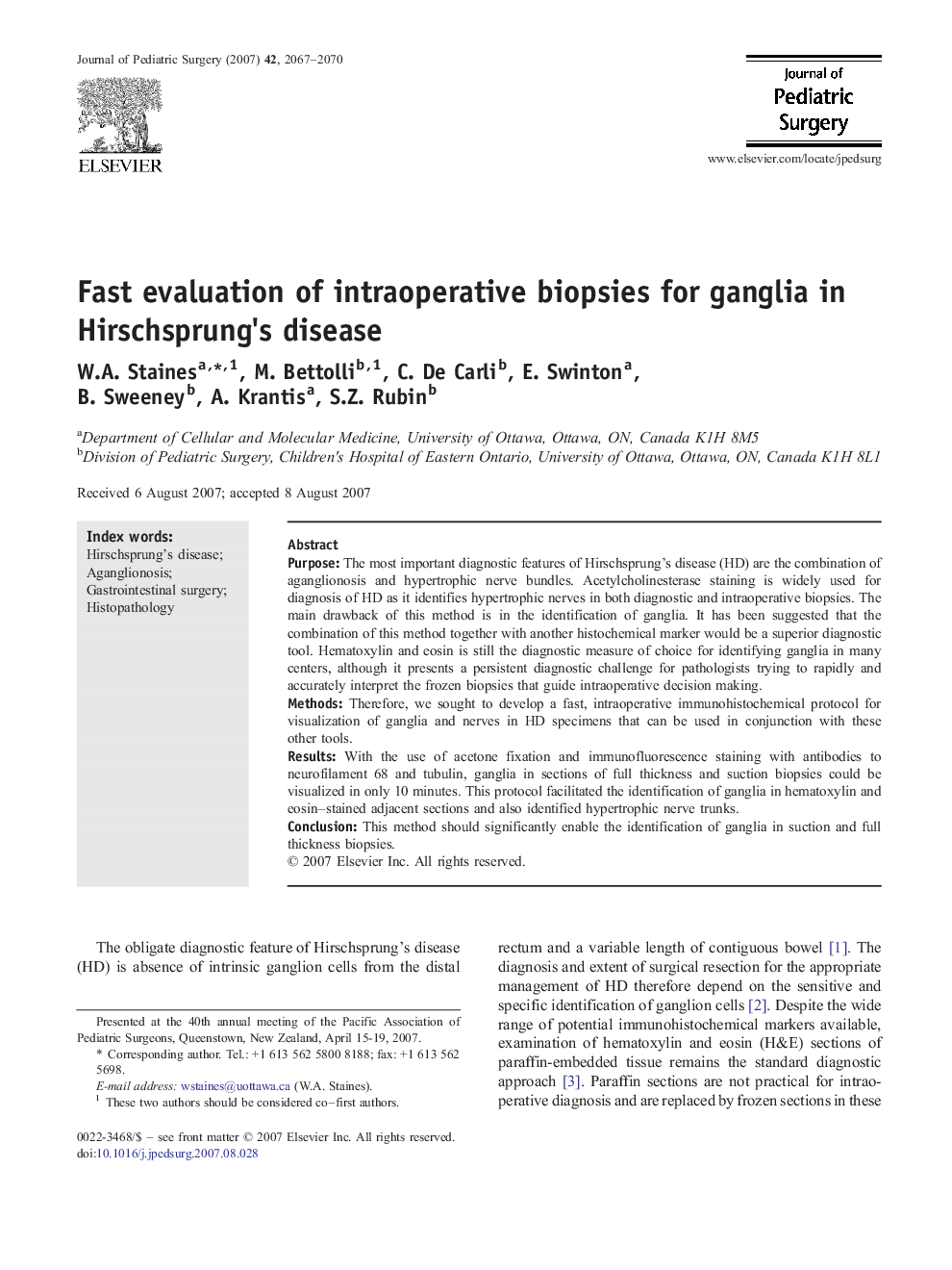| Article ID | Journal | Published Year | Pages | File Type |
|---|---|---|---|---|
| 4160004 | Journal of Pediatric Surgery | 2007 | 4 Pages |
PurposeThe most important diagnostic features of Hirschsprung's disease (HD) are the combination of aganglionosis and hypertrophic nerve bundles. Acetylcholinesterase staining is widely used for diagnosis of HD as it identifies hypertrophic nerves in both diagnostic and intraoperative biopsies. The main drawback of this method is in the identification of ganglia. It has been suggested that the combination of this method together with another histochemical marker would be a superior diagnostic tool. Hematoxylin and eosin is still the diagnostic measure of choice for identifying ganglia in many centers, although it presents a persistent diagnostic challenge for pathologists trying to rapidly and accurately interpret the frozen biopsies that guide intraoperative decision making.MethodsTherefore, we sought to develop a fast, intraoperative immunohistochemical protocol for visualization of ganglia and nerves in HD specimens that can be used in conjunction with these other tools.ResultsWith the use of acetone fixation and immunofluorescence staining with antibodies to neurofilament 68 and tubulin, ganglia in sections of full thickness and suction biopsies could be visualized in only 10 minutes. This protocol facilitated the identification of ganglia in hematoxylin and eosin–stained adjacent sections and also identified hypertrophic nerve trunks.ConclusionThis method should significantly enable the identification of ganglia in suction and full thickness biopsies.
